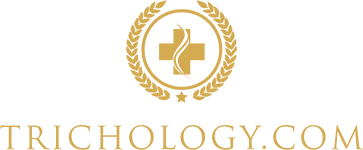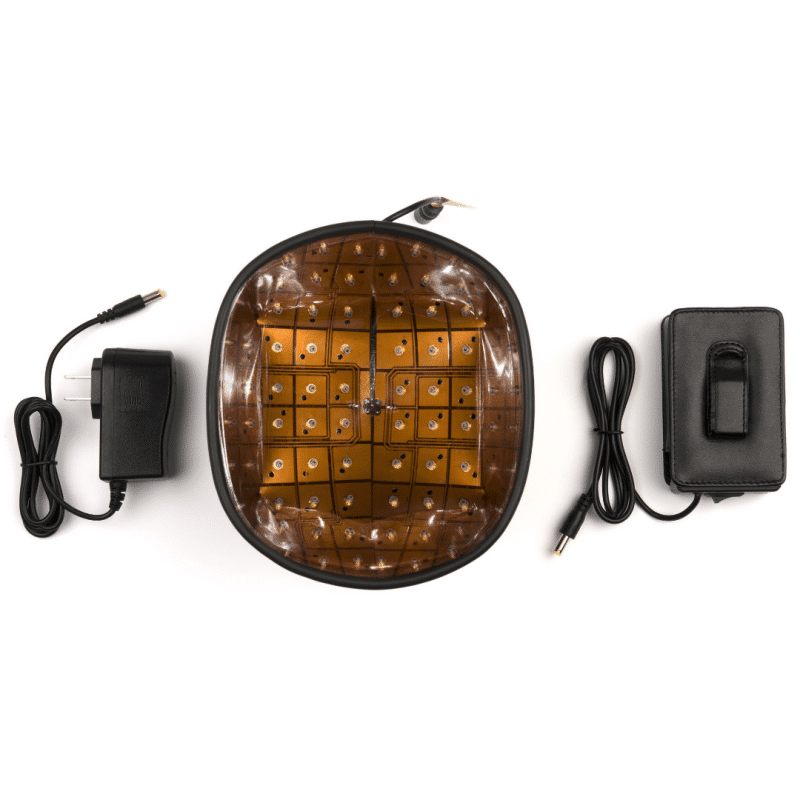We have said many times that there can be various reasons behind a person’s hair loss, but it is also true that there are a wide variety of therapeutical options to treat those symptoms. These can range from oral to topical medication, steroids, laser therapies and surgical procedures such as hair transplants. The selection of the most appropriate option treatment for an individual depends upon the underlying causes of hair loss, along with other factors such as for example age, gender, patient’s personal preference and cost of procedures. One such treatment option includes a hair growth stimulant known as Low-Level Laser Therapy (LLLT).
How does Low-Level Laser Therapy (LLLT) work?
Since the invention of lasers in the 1960s, there has been a tremendous interest in using these devices to treat various medical conditions. These include their use in shrinking or destroying tumors, polyps, or precancerous growths, helping the healing of wounds, relieving chronic and acute pain symptoms, etc.
Also known as the red light and cold light therapy, LLLT works by emitting energy in the form of light photons. These photons, when targeted towards the scalp, increase the blood circulation towards the hair follicles along with stimulating and enhancing cellular functions. Laser phototherapy is also assumed to stimulate hair follicles which are in the telogen (resting) phase, to re-enter the anagen (growth) phase, increasing rates of proliferation occurring at the hair follicles and therefore preventing premature catagen phase (hair loss) development.
How effective is Low-Level Laser therapy in the treatment of hair loss?
Multiple pieces of research have validated the effectiveness and safety of this procedure.
A study conducted in Japan observed the effectiveness and side effects of LLLT in both gender groups suffering from alopecia. After 26 weeks of exposure to LLLT both groups saw a positive increase in their hair’s anagen phase. In the male group, only 3% of the participant experienced side effects such as paresthesia and mild urticaria. On the other hand, side effects for the female participants included dryness (5.1%), itching (2.5%), tenderness (1.3%), tingling sensation (1.3%) and thermal sensation (1.3%) of the irradiated skin.
A research conducted in Thailand and published in 2019 focused on LLLT in relation with patients suffering from androgenetic alopecia. The study investigated the changes in the protein expression that Low-Level Laser Therapy induced on dermal papilla tissue. Participants were asked to self-treat the scalp with a helmet type of LLLT for 24 weeks. Biopsy samples of the scalp were then taken and were histologically compared with the samples taken before the induction of the study. It was found in the proteomic analysis that LLLT had positively enhanced the cellular functions at the level of the dermal papilla. The results at the gross level also showed the promotion of hair growth and a reverse in the miniaturizing process that is characteristic of androgenetic alopecia. These results prompted researchers to conclude the effectiveness of LLLT, and strongly recommending it for the treatment of this type of hair loss.
A further meta-analysis published in 2017, found that 10 out of 11 published clinical trials supported the efficacy of Low-Level Laser Therapy in cases of androgenetic alopecia. Two trials even showed effective results when LLLT was used in combination with topical minoxidil or finasteride.
Advantages of Low-Level Laser Therapy?
LLLT is generally considered to be a safe, non-invasive and painless procedure that promotes hair growth and prevents further hair loss. It has shown promising results, especially when employed to treat androgenetic alopecia, and is even being considered as monotherapy for the treatment of this disease.
LLLT appears to also improve a variety of other non-scarring alopecias including alopecia areata and chemotherapy-induced alopecia. Studies also suggest on adjunct use of LLLT during the immediate period post-hair transplant surgery as it facilitates the healing process and enhances viability and growth of the grafts.
Disadvantages of LLLT?
Relatively few disadvantages are poised by LLLT treatment. These include:
Duration of therapy: To observe any significant result multiple sittings of LLLT sessions are required over a period of a few months.
Cost: LLLT remains an expensive procedure in comparison to medicinal and other non-invasive procedures.
Ineffective: Unfortunately LLLT does not work as effectively as reported in all individuals. Some patients might not observe any changes even when properly exposed for a prolonged duration of time.
Side effects: LLLT may interact with photosensitizing medications and, although rare, side effects such as scarring and itching may appear.
References:
Panchaprateep R, Pisitkun T, Kalpongnukul N. Quantitative proteomic analysis of dermal papilla from male androgenetic alopecia comparing before and after treatment with low‐level laser therapy. Lasers in surgery and medicine. 2019 Sep;51(7):600-8.
Afifi L, Maranda EL, Zarei M, Delcanto GM, Falto‐Aizpurua L, Kluijfhout WP, Jimenez JJ. Low‐level laser therapy as a treatment for androgenetic alopecia. Lasers in surgery and medicine. 2017 Jan;49(1):27-39.
Avram M. Laser and light treatment for hair transplantation and growth induction. Step by Step. 2013:313.
Rangwala S, Rashid RM. Alopecia: a review of laser and light therapies. Dermatology online journal. 2012 Feb;18(2):3-.
Zarei M, Wikramanayake TC, Falto-Aizpurua L, Schachner LA, Jimenez JJ. Low-level laser therapy and hair regrowth: an evidence-based review. Lasers in medical science. 2016 Feb 1;31(2):363-71.
Avram MR, Leonard Jr RT, Epstein ES, Williams JL, Bauman AJ. The current role of laser/light sources in the treatment of male and female pattern hair loss. Journal of Cosmetic and Laser Therapy. 2007 Jan 1;9(1):27-8.
Pinfildi CE, Hochman BS, Nishioka MA, Sheliga TR, Neves MA, Liebano RE, Ferreira LM. What is better in TRAM flap survival: LLLT single or multi-irradiation?. Lasers in medical science. 2013 May 1;28(3):755-61.
Prado RP, Garcia SB, Thomazini JA, Piccinato CE. Effects of 830 and 670 nm laser on the viability of random skin flap in rats. Photomedicine and laser surgery. 2012 Aug 1;30(8):418-24.
Leavitt M, Charles G, Heyman E, Michaels D. HairMax LaserComb® laser phototherapy device in the treatment of male androgenetic alopecia. Clinical drug investigation. 2009 May 1;29(5):283-92.
Wikramanayake TC, Rodriguez R, Choudhary S, Mauro LM, Nouri K, Schachner LA, Jimenez JJ. Effects of the Lexington LaserComb on hair regrowth in the C3H/HeJ mouse model of alopecia areata. Lasers in medical science. 2012 Mar 1;27(2):431-6.

